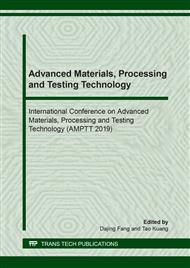p.70
p.81
p.89
p.99
p.107
p.114
p.120
p.125
p.133
Mechanism of Cementite Spheroidization from Different Initial Microstructures in Fe-0.65C-2.33Mn Alloy
Abstract:
The spheroidization mechanism from different initial microstructures during spheroidizing heat treatment was studied in Fe-0.68C-2.33Mn alloy. Two types of initial microstructures, i.e. pearlite and martensite, were obtained by varying the cooling rate. The microstructure and property evolution during spheroidizing annealing was characterized by scanning electron microscopy (SEM) and transmission electron microscopy (TEM). The DICTRA software, assuming local equilibrium conditions, was used to simulate the carburizing process of different initial microstructures through different cooling rate. The results indicate that the spheroidization mechanism of cementite was related to the initial microstructures and the smaller lamellar spacing of pearlite inhibited the coarsening of cementite, resulting in the size of cementite smaller than that of martensite as the initial structure.
Info:
Periodical:
Pages:
107-113
Citation:
Online since:
August 2019
Authors:
Keywords:
Price:
Сopyright:
© 2019 Trans Tech Publications Ltd. All Rights Reserved
Share:
Citation:


